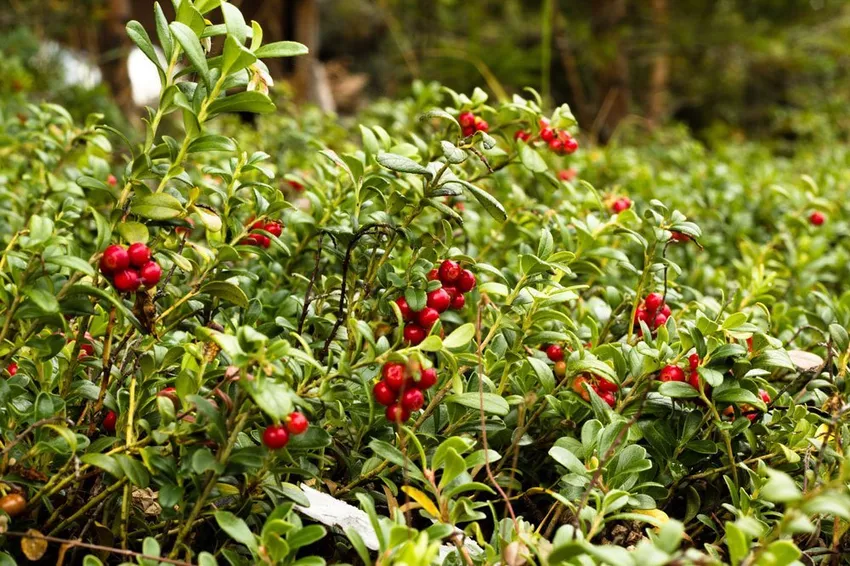Cranberry bushes are actually very robust. However, various farm animals and a special fungus can cause the plant severe problems and, in the worst case, even lead to the death of the plant. Cranberries are basically very robust plants that have few enemies. Hardly any pests attack cranberries. Only birds and mice like the taste of the red fruit, which is often a burden for hobby gardeners.
Cranberries are basically very robust plants that have few enemies. Hardly any pests attack cranberries. Only birds and mice like the taste of the red fruit, which is often a burden for hobby gardeners.
Cranberries rarely suffer from diseases. If they do get sick, a fungus is always to blame for the disease. The lingonberry is immune to all other pathogens. Cranberries are most commonly attacked by so-called bare basidia. The rust fungus is also a common disease-causing lingonberry bush.
What are nude basidi?
Nude basidia belong to the fungus family. Depending on the species, they attack the shoots, the leaves or the entire plant. There are 26 different types of nude basidia in Europe. Only three species attack the cranberries:
- Exobasidium vaccinii - attacks leaves
- Exobasidium splendidum - attacks the shoots
- Exobasidium juelianum - attacks the entire plant
Another type of fungus that primarily attacks cranberries is the rust fungus. This form of the fungus is also very dangerous for crops.
How to recognize an infestation
Because fungi do not kill the plant, but only weaken it, they are particularly insidious. Fungi reproduce by spores. They penetrate the cells of the plant and can continue to multiply there indefinitely. Therefore, infection with fungi is particularly dangerous. Most of the time, the plants cannot be saved.
Exobasidium vaccinii
A fungal infestation is often not recognized immediately. The fungus penetrates the plant and multiplies there. During this process, the leaves or shoots lose their beautiful green color and become pale. Later, when the mushrooms have already multiplied, the leaves turn bright red. The once dark green coloring is no longer visible. Usually the fungal infestation is only recognized now.
Exobasidiumsplendidum
If the mushrooms attack the shoot, it also loses color and later turns red. In addition, no new shoots form and the flowers are lost. The fruits of the bush are no longer edible.
Exobasidium juelianum
When the disease has spread and all the leaves have turned red, fungal spores cause further problems. A thickening can be seen on the underside of the leaf. These pink galls will be visible to the naked eye sooner or later.
What to do if you have fungus?
Because the fungus spreads via spores, it is easy for them to infect many different plants very quickly. Since fungi are very aggressive in their actions, it is not possible to save the plant. Mushrooms have the property that they can specialize on a plant. They are always evolving to become immune to as many fungicides as possible. As soon as you recognize the fungal infestation, all infested plants must be disposed of. It is important that you dig them out of the bed and not cut them off. Once the plant has caught a fungus, it will never get rid of it.
Cranberry enemies of course
In general, cranberries have no enemies. Many hobby gardeners have no problem with a few birds coming into the garden. After all, these drive away many pests and eat worms and other insects. However, care should be taken that the birds do not eat all the cranberries. After all, these are high on the menu list of many different bird species.
There are several ways to keep cranberries away from unwanted birds. The cranberry bushes can be covered with netting. The best way to do this is to use nets that have small thumbtacks, such as this one. But you can also set up a dummy of large birds or cats to keep uninvited guests away. As you often see in home gardens, CDs hang on many trees. These reflect the sun and flash the birds. Birds cannot identify this flash and prefer to stay away.
Another species that could cause problems are mice. Mice are always looking for a warm place to sleep. Because the cranberries cover the ground, mice can build a great house under them. This problem usually occurs when the shrubs are planted too close together. The cranberries grow very densely and offer the mice a very good shelter. It won't be long before the mice get a taste for the cranberrycome. They won't attack the plants, but they will eat all the fruit off the bush for the hobby gardener.
Conclusion:
Cranberries are very hardy plants. They can cope well with very hot but also very cold temperatures, which is why they are considered to be particularly frost-resistant. The cranberries have few natural enemies. Pests that attack many other plants don't stand a chance with cranberries. Only birds and mice make life difficult for the hobby gardener, because these animals love the taste of the sweet and sour fruit.
There is only one disease that can affect cranberries. Fungi have specialized in individual plants over time, and there are four types of fungi that destroy lingonberry bushes. If you have identified a fungal infestation by the bright red color of the leaves and shoots, you must remove the plant from the bed. It is no longer possible to save them.